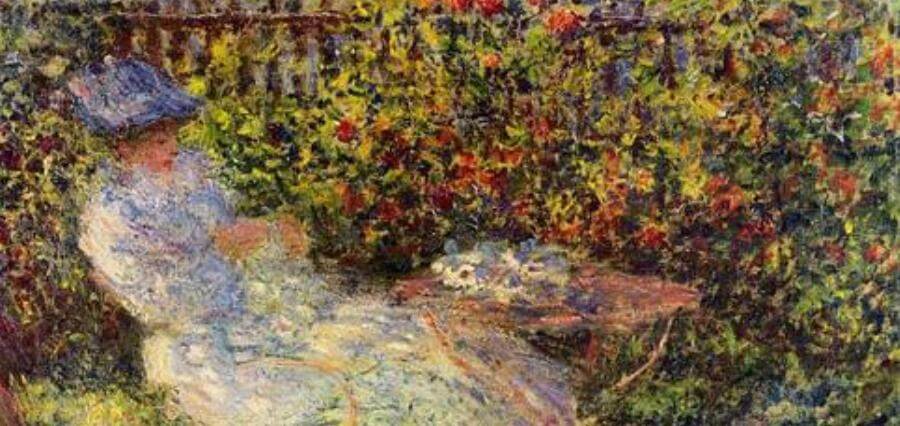Claude Monet was a French artist well known for his series of Water Lilies paintings. He was a great name in the Impressionist movement and contributed a lot to the development of expressive art during the 19th century. He was an active proponent of channelizing the Impressionism philosophy and ideologies to open gateways of paintings to a broader vision.
His groundbreaking Impressionist paintings are considered a benchmark of beyond extraordinary art. Claude Monet’s famous paintings of the time include the Water Lilies series, Haystacks,- which encapsulate nature’s beauty in its pristine form.
Learn more about Monet artist and his journey as a solid artistic force even after suffering from severe depression. Take a sneak peek at Claude Monet’s artworks and paintings which left an imprint on the world’s creative map.
Claude Monet- The Impressionist Master
In 1840, Claude Monet was born in Paris and, with his family, moved to Le Havre in 1845. In Le Havre, he started his artistic journey and started exploring the Plein-air painting, a technique that became the foundation of his Impressionist work.
Interestingly, the term Impressionism was named after Monet’s painting- Soleil Levant. It was exhibited in 1874 among the very initial exhibitions mounted by Monet. His legacy influenced modern and contemporary art in different genres and inspired various people.
The Claude Monet artwork, Red Barn, influenced artists like Roy Lichtenstein. He was so inspired by Monet’s paintings that, just like him, he covered six to eight images in more than twenty extended print series in the year 1969 to 1993.
Monet was an artistic force to reckon with, and when it came down to painting, there was absolutely nothing that could stop him. He didn’t just base his landscapes on the traditional natural lighting and landscapes but expanded his art to Japanese-style painting. As a result, many of Claude Monet’s famous artworks seek inspiration from Japanese art.
Camille Monet In Japanese Costume – Claude Monet
A Phase of Depression
Apart from having a great vision and a brilliant mind, there are things that the human hands cannot control. Such was the case with Claude Monet. At the age of 28, when Monet was on the brink of not being able to tolerate depression anymore, he attempted suicide by trying to drown himself in the Seine River.
Monet has already served his services as a true nation lover to the military and started facing health issues after that. He mostly spent his life suffering from poverty. But, this was not just it. He had a significant breakdown when his wife Camille became ill in 1876. However, a period of joy struck the family in 1878 when the couple welcomed a baby boy Michel to the family.

Madame Monet and Child – Claude Monet
However, it couldn’t last for an extended period. Then, on 5 September 1879, his wife Camille died due to tuberculosis. Monet expressed his deep sorrow for her by painting her on her deathbed. Struggling mentally and emotionally, Monet had to figure out ways for his survival and manage finances.
The Torture Behind Monet’s Tranquil Water Lillies
The everlasting beauty of Claude Monet’s artworks, Water Lilies, is way beyond a series of hard work and dedication. Monet wanted this artwork to have pacifying effects that could calm the stressed-out spectators by offering them “an asylum of peaceful meditation,” in his words.
Monet painted peaceful and meditative canvases with gorgeous vistas syncing the soothing harmonies to come out of their creation’s mental strain and physical efforts. However, while painting Water Lilies, Monet sometimes raged his anger against his canvases.

Water Lily Pond – Claude Monet
He slashed them with a knife as an aggressive act of violence, and he even set them alight in bonfires when he couldn’t control the severity. As a result, a perfectionist like him suffered more challenges in fulfilling his artistic expectations.
In most cases, he wished to capture the canvas with the fleeting effects of light and shade, drawing the ripples, rains, and clouds precisely like what nature reflected. However, he had a tough time accepting that these didn’t turn out the same as he saw them.
Hardships Painting the Water Lilies
To manifest his dream object in the portraiture of Water Lilies, Claude Monet sat before a luminous abyss like a nerd day after day, week after week, and nearly after a year, he achieved his imaginative picturesque view.

Red Water Lilies – Claude Monet
To celebrate his series, in 1907, he conducted an exhibition on “landscapes of water.” But, it didn’t receive much appreciation, which hit Money badly. Being highly frustrated by this, he damaged his garden so severely that the dust from the nearby roads settled on his inspirational Water Lilies.
His gardeners took daily care of them by deep cleaning. Before this incident, Monet had destroyed at least 30 masterpieces in despair, which was confirmed by his second wife, Alice. Later, Claude suffered from dizzy spells and blurred vision.

Alice Hoschede In The Garden – Claude Monet
In 1909, Monet’s 48 canvases of Water Lilies went for exhibition in Paris. After five years in 1914, he returned to the same motif to continue painting them. He put more tantrums while painting, and multiple bonfires were lit again. Apart from such hardship and devastating effects, Water Lilies remains his finest work worth £40 million.
The Bottom Line
Although the artist faced a tough time dealing with his depression, his love for art and perfection was never compromised. Claude Monet’s artworks are oil-on-canvas reproductions made with delicate brushstrokes and bright colors. Check Claude Monet’s famous paintings online and dive deep into his fantastic portraiture skill.


